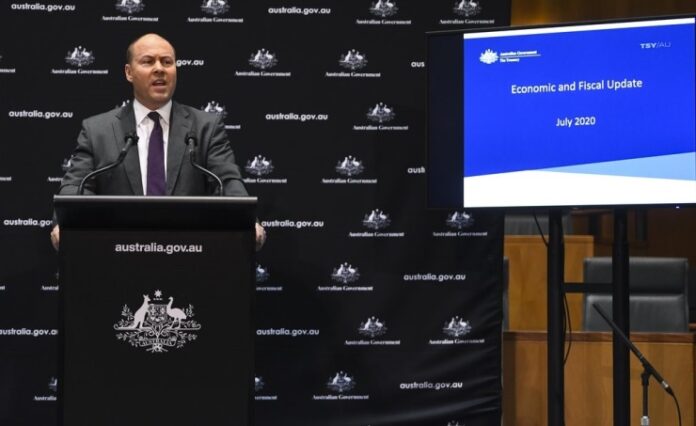By DPA
Australia says its budget deficit will be 85.8 billion Australian dollars (AD) ($61.2 billion) in 2019-20 and AD184.5 billion in 2020-21.
This marks the biggest deficit since World War II, due to the economic fallout from the coronavirus pandemic.
“Australia is experiencing a health and economic crisis like nothing we have seen in the last 100 years,’’ Treasurer, Josh Frydenberg, said in a press conference giving a special budget update on Thursday.
“The government has acted swiftly and decisively to provide economic support for workers, households and businesses of around AD289 billion or the equivalent of 14.6 per cent of GDP,’’ he said.
The real GDP is forecast to fall by seven per cent in the April-June quarter and 3.75 per cent in the calendar year 2020, he said.
Net debt is expected to increase to AD677.1 billion, 35.7 per cent of GDP by July next year.
“These harsh numbers reflect the harsh reality we have faced… The economic and fiscal outlook remains highly uncertain,’’ he said.
He said there was a significant decline in tax receipts and a large increase in government payments, due to the COVID-19 pandemic and the bush fires, leading to a “dramatic change in the budget position’’.
Australia’s conservative government was planning to be “back in the black” and produce the first budget surplus since the 2008 Global Financial Crisis (GFC) of about AD5 billion this year, but the hopes have been obliterated by the pandemic.
The projected 2020-21 deficit is about four times the last record, which was AD54.5 billion when Australia tackled the 2008 GFC.
The unemployment rate will peak at 9.25 per cent by Christmas, said Frydenberg, though the “effective rate”, which includes those not looking for work or part-time workers working fewer hours, is likely much higher.
Australian Bureau of Statistics said this week the unemployment rate is currently 7.4 per cent and Frydenberg said the “effective rate” currently is more than 11 per cent.
More than 870,000 jobs were lost between March and May this year and about one million workers saw their hours cut.
But the government’s wage subsidy programme for employees has supported more than 960,000 businesses and not-for-profits, helping some 3.5 million workers.
The government has so far introduced fiscal support measures worth AD164 billion, or 8.4 per cent of GDP, he said.
Australia’s economy is entering recession territory due to the economic malaise from the COVID-19 pandemic for the first time in 29 years, with the official figures coming in September.
Finance Minister, Mathias Cormann, said Australia was in a “better, stronger, more resilient position than about any other country in the world’’.
He added that Australia had “outperformed nearly every other country,’’ and that it was in a strong position for economic recovery.
Mining was one of the few sectors where the Thursday’s economic update showed a bright spot, with investment in Australia expected to grow for the first time in seven years by four per cent in 2019/20 and another 9.5 per cent in 2020/21.
“It’s well known there can be volatility when it comes to iron ore prices so we continue to make sure we protect the stability of our budget settings in that context,’’ Cormann said.
Australia has recorded more than 13,000 coronavirus cases and 133 COVID-19-related deaths. (dpa)




